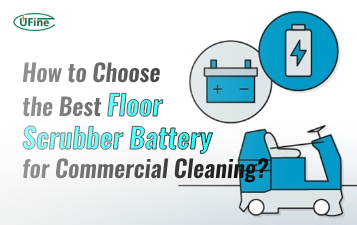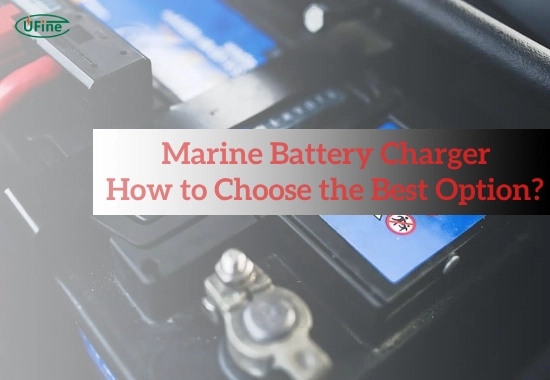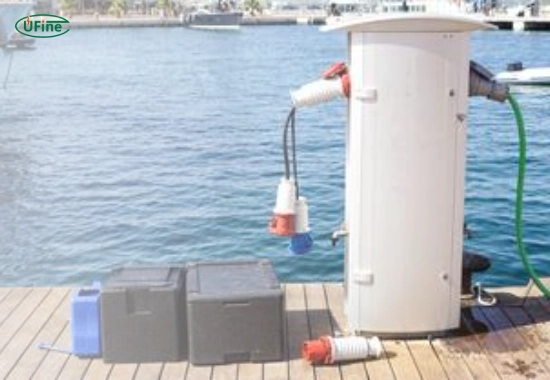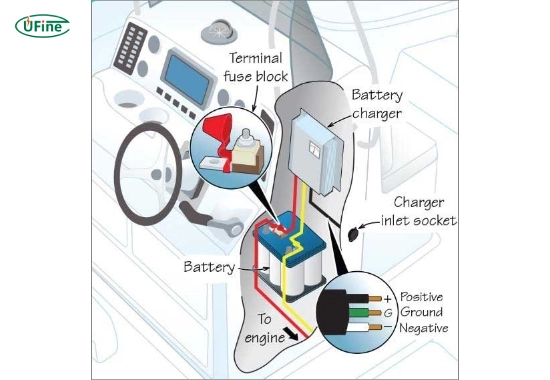Ensuring that your marine battery charger is efficient and reliable is crucial when boating. Whether you’re a seasoned sailor or a weekend warrior, having the right charger can make all the difference in keeping your boat’s power systems running smoothly. In this comprehensive guide, we will explore everything you need to know about choosing the best marine battery charger for your boat, from understanding the different types available to key features you should look for.
Part 1. What is a marine battery charger?
A marine battery charger is a specialized device designed to recharge batteries used in boats and other marine applications. Unlike standard chargers, these are built to withstand the harsh marine environment, including moisture and salt exposure. They come equipped with features that cater specifically to the needs of marine batteries, ensuring optimal performance and longevity.
Key Functions of Marine Battery Chargers
- Charging Efficiency: Marine chargers are designed to charge batteries quickly and efficiently, reducing downtime on your boat.
- Battery Maintenance: Many models include maintenance modes that prevent overcharging, which can damage batteries.
- Compatibility: They are compatible with various battery types, including lead-acid, gel, and lithium-ion.
Part 2. Types of marine battery chargers
Understanding the different types of marine battery chargers can help you make an informed decision.
1. Smart Chargers
Smart chargers automatically adjust their charging rate based on the battery’s state of charge. This feature helps prolong battery life by preventing overcharging.
2. Manual Chargers
These chargers require you to monitor the charging process manually. While they can be less expensive, they may offer a different level of protection than smart chargers.
3. Portable Chargers
Portable chargers are ideal for those who need flexibility. They are lightweight and easy to transport, perfect for smaller boats or emergencies.
4. Onboard Chargers
Onboard chargers are permanently installed on your boat and can charge multiple batteries simultaneously. They are convenient but may require professional installation.
Part 3. Key features to consider when choosing a marine battery charger
When selecting a marine battery charger, consider the following features:
1. Charging Amperage
The charging amperage indicates how quickly the charger will replenish your battery’s power. A higher amperage means faster charging but may not be suitable for all battery types.
2. Battery Compatibility
Ensure that the charger is compatible with your specific type of battery—whether it’s lead-acid, AGM, or lithium-ion.
3. Water Resistance Rating
Look for chargers with a high water resistance rating (like IP67) to ensure they can withstand splashes and moisture.
4. Multi-Bank Charging Capability
Consider a multi-bank charger that can charge several batteries simultaneously without compromising efficiency if your boat has multiple batteries.
5. Built-in Safety Features
Safety features such as reverse polarity protection and short-circuit protection are essential for preventing accidents during charging.
Part 4. How to install a marine battery charger?
Installing a marine battery charger can seem daunting, but with careful planning and execution, it can be a straightforward process.
Step 1: Gather Your Tools
Before you start, make sure you have all the necessary tools on hand:
- Screwdrivers (flathead and Phillips)
- Wire cutters
- Crimping tools
- Electrical tape
- A multimeter (for testing connections)
Step 2: Choose an Installation Location
Select a dry area on your boat where the charger will be protected from water exposure. Common locations include:
- Near the battery compartment
- On a bulkhead or wall that is easily accessible
- Away from direct sunlight or heat sources
Step 3: Prepare Your Batteries
- Before connecting anything, ensure your batteries are in good condition and fully charged. Clean any corrosion from terminals using a mixture of baking soda and water.
Step 4: Connect Wires
Follow these steps carefully:
- Identify Positive and Negative Terminals: Ensure you know which terminal is positive (+) and negative (-) on your charger and batteries.
- Connect Positive Wires First: Attach the positive wire from the charger to the battery’s positive terminal.
- Connect Negative Wires: Attach the negative wire from the charger to the battery’s negative terminal.
- Secure Connections: Use electrical tape or heat shrink tubing to secure connections and prevent accidental disconnections.
Step 5: Mount the Charger
- Use screws or brackets provided in your installation kit to mount the charger securely in place. Make sure it is stable and won’t move during operation.
Step 6: Test Your Installation
Before heading out on the water:
- Plug in your charger and turn it on.
- Use a multimeter to check voltage levels at both terminals.
- Monitor the charger’s indicators (if available) to ensure it’s functioning correctly.
Part 5. How does a marine battery charger differ from a regular car battery charger?
Understanding how a marine battery charger differs from a regular car battery charger is crucial for choosing the right equipment for your boating needs.
Key Differences
Design Purpose:
- Marine Battery Chargers: Explicitly designed for deep-cycle batteries used in boats that require sustained power over extended periods.
- Car Battery Chargers are primarily built to start engines quickly. They provide high bursts of power but aren’t optimized for prolonged use without recharging.
Construction:
- Marine chargers are typically more rugged and waterproof due to exposure to harsh marine environments.
- Car chargers lack these protective features since they operate in less demanding conditions.
Charging Protocols:
- Marine chargers often include advanced charging algorithms that accommodate various states of charge and types of batteries.
- Car chargers usually follow simpler charging protocols, focused solely on quickly supplying enough power to a dead or dying car battery.
Battery Compatibility:
- Marine chargers can handle different types of batteries (lead-acid, AGM, lithium) while ensuring proper charging cycles.
- Car chargers may not provide suitable charging profiles for deep-cycle batteries found in boats.
Due to these differences, using a car battery charger on a marine battery can lead to poor performance or even damage, making it essential to use equipment designed specifically for marine applications.
Part 6. Popular brands of marine battery chargers
When it comes to choosing a reliable marine battery charger, several brands stand out:
- Noco Genius
- Minn Kota
- Promariner
- Guest
- Schumacher Electric
Each brand offers unique features tailored to different boating needs and budgets.
Part 7. Cost considerations when buying a marine battery charger
The cost of marine battery chargers varies widely based on features and brand reputation:
- Basic Models: $50 – $100
- Mid-Range Models: $100 – $300
- High-End Models: $300+
Investing in a quality charger can save you money in the long run by extending your batteries’ lifespan.
Part 8. Maintenance tips for marine battery chargers
To ensure longevity and performance from your marine battery charger, consider these maintenance tips:
- Regular Inspections: Check connections and wiring for signs of corrosion or wear.
- Cleanliness: Keep the charger clean and free from dust or debris.
- Storage: If not used for an extended period, store your charger in a dry place.
- Firmware Updates: If applicable, keep firmware updated for smart chargers to enhance performance.
Part 9. FAQs
-
What is the difference between a smart charger and a regular charger?
A smart charger automatically adjusts its charging parameters based on the battery’s state. In contrast, a regular charger does not have this capability. -
Can I leave my marine battery charger plugged in all the time?
Yes, many modern smart chargers have maintenance modes that allow them to remain plugged in without overcharging your batteries. -
How do I know if my marine battery needs charging?
Signs include dimming lights, slow engine cranking, or difficulty starting electrical devices onboard. -
What size marine battery charger do I need?
The size depends on your battery’s capacity (measured in amp-hours) and how quickly you want it charged. A general rule is to choose a charger with an amperage rating of at least 10-20% of your battery’s capacity. -
Are lithium-ion batteries better than lead-acid batteries?
Lithium-ion batteries generally offer higher energy density, longer lifespan, and lighter weight than lead-acid batteries, but they come at a higher initial cost.
Related Tags:
More Articles

How to Choose the Best Floor Scrubber Battery for Commercial Cleaning?
Selecting the ideal floor scrubber battery ensures a long runtime, rapid charging, and minimal maintenance for efficient commercial cleaning operations.
Battery for Blower vs Battery for Leaf Vacuum: Which One Should You Choose?
Battery for blower vs leaf vacuum—learn the key differences in power, fit, and runtime to choose the right battery for your outdoor tool needs.
How to Choose the Right Battery for Blower?
Choosing the right blower battery? Consider voltage, capacity, chemistry & usage. This guide helps match the best battery for peak performance.
How to Choose the Best Insulated Battery Box for Lithium Batteries?
Choosing the Best Insulated Battery Box for Lithium Batteries? Discover key factors such as size, material, and safety for optimal protection and performance.
7 Critical Elements on a Lithium Battery Shipping Label
What must be on a lithium battery shipping label? Learn 7 key elements to ensure safety, legal compliance, and correct handling across all transport modes.






